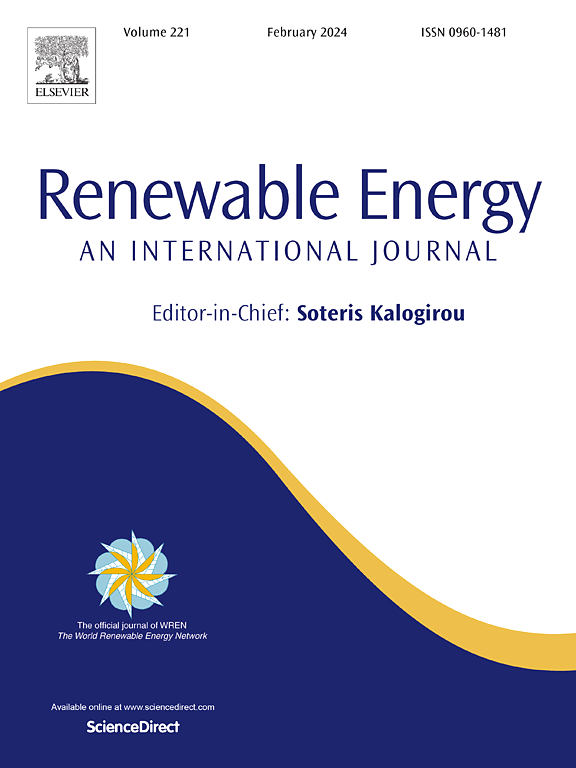Optimisation of heterogeneous wave energy converter arrays: A control co-design strategy
IF 9
1区 工程技术
Q1 ENERGY & FUELS
引用次数: 0
Abstract
The commercial development and deployment of wave energy converters (WECs) will require arranging these devices in groups known as ‘arrays’, similar to the deployment other large-scale renewable energy systems, such as wind farms, or tidal arrays. This study explores a novel control co-design (CCD) strategy for heterogeneous arrays of point absorber-type WECs, focusing on the simultaneous optimisation of buoy hull geometry and array layout to harness multi-directional wind and swell wave energy. The WEC array operates under a newly developed global centralised control algorithm, which supports displacement constraints, but allows for the assessment of array performance in the frequency domain. This approach has the potential to significantly speed up the numerical solution of the control co-design optimisation problem, compared to more traditional time-domain-based methods. The array optimisation problem is solved using a global optimisation method. The performance function aims to optimise the positive network effect of interactions between devices in the array, while simultaneously considering cost issues, quantified by device sizes. The investigation identifies optimal device geometry and array layouts for clusters of three, four, and five WECs, in two different wave climates: Irish and Portuguese coasts, allowing the sensitivity of optimal solutions to different wave climates to be studied.

求助全文
约1分钟内获得全文
求助全文
来源期刊

Renewable Energy
工程技术-能源与燃料
CiteScore
18.40
自引率
9.20%
发文量
1955
审稿时长
6.6 months
期刊介绍:
Renewable Energy journal is dedicated to advancing knowledge and disseminating insights on various topics and technologies within renewable energy systems and components. Our mission is to support researchers, engineers, economists, manufacturers, NGOs, associations, and societies in staying updated on new developments in their respective fields and applying alternative energy solutions to current practices.
As an international, multidisciplinary journal in renewable energy engineering and research, we strive to be a premier peer-reviewed platform and a trusted source of original research and reviews in the field of renewable energy. Join us in our endeavor to drive innovation and progress in sustainable energy solutions.
 求助内容:
求助内容: 应助结果提醒方式:
应助结果提醒方式:


